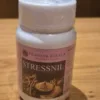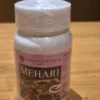Dadima
|
Botanical Name |
Punica Granatum |
|
Family |
Punicaceae |
|
Sanskrit |
– |
|
English |
Pomogranate |
|
Hindi |
Anar |
|
Kannada |
Dadimbe |
|
Malayalam |
Matalam |
|
Telugu |
Danimma |
|
Tamil |
Maduli |
|
Marathi |
Dalimb |
Distribution:
Cultivated throughout india. Wild in the north western region, western himalayas, punjab, north western bengal.
|
Parts Used: |
Fruits, Fruit Rind, Root Bark, Floral Bud |
|
Dose: |
Fruit Juice:20-50ml, Kashaya:40-80ml, Bark Churna:3-5gm |
Chemical Constituents
Tannins(punicalin,punicalaginate), punic acid, estrone, ursolic acid, vitamin c, thiamin, riboflavin
Ayurvedic Properties:
|
Quality (Guna) |
Laghu, Snigdha |
|
Taste (Rasa) |
Kashaya, Madhura, Amla |
|
Metabolism (Vipaka) |
Madhura / Amla |
|
Potency (Virya) |
Ushna |
|
Impact (Prabhava) |
Rochana |
Pharmacological Action:
- In different kind of bleeding disorders.
- Its antioxidant, antifungal, antibacterial property helps in skin diseases.
- Has got antifertility and antidiarhoeal property in reducing body heat.
- Helps in different kinds of fever.
- In abdominal problems especially in diarhoea and abdominal worms.
- Urinary tract infection
- Helps in improving strength and vigour
Therapeutic Uses
- Juice of pomegranate taken internally is good for skin nourishment since it has vit c and also in low bp and asthma.
- Sore throat and tonsillitis: decoction of pomegranate peels are used for gargling.
- Pomegranate peel powder is usedfor preventing bad breath.
- Pomegranate peel powder mixed with lime juice is apllied on skin to reduce pimples.
Some of the common formulations
Dadimashtaka churna, dadimadi ghrita, bhaskara lavana churna, gangadhara churna, dadiadi taila, dadimacatuhsama etc




